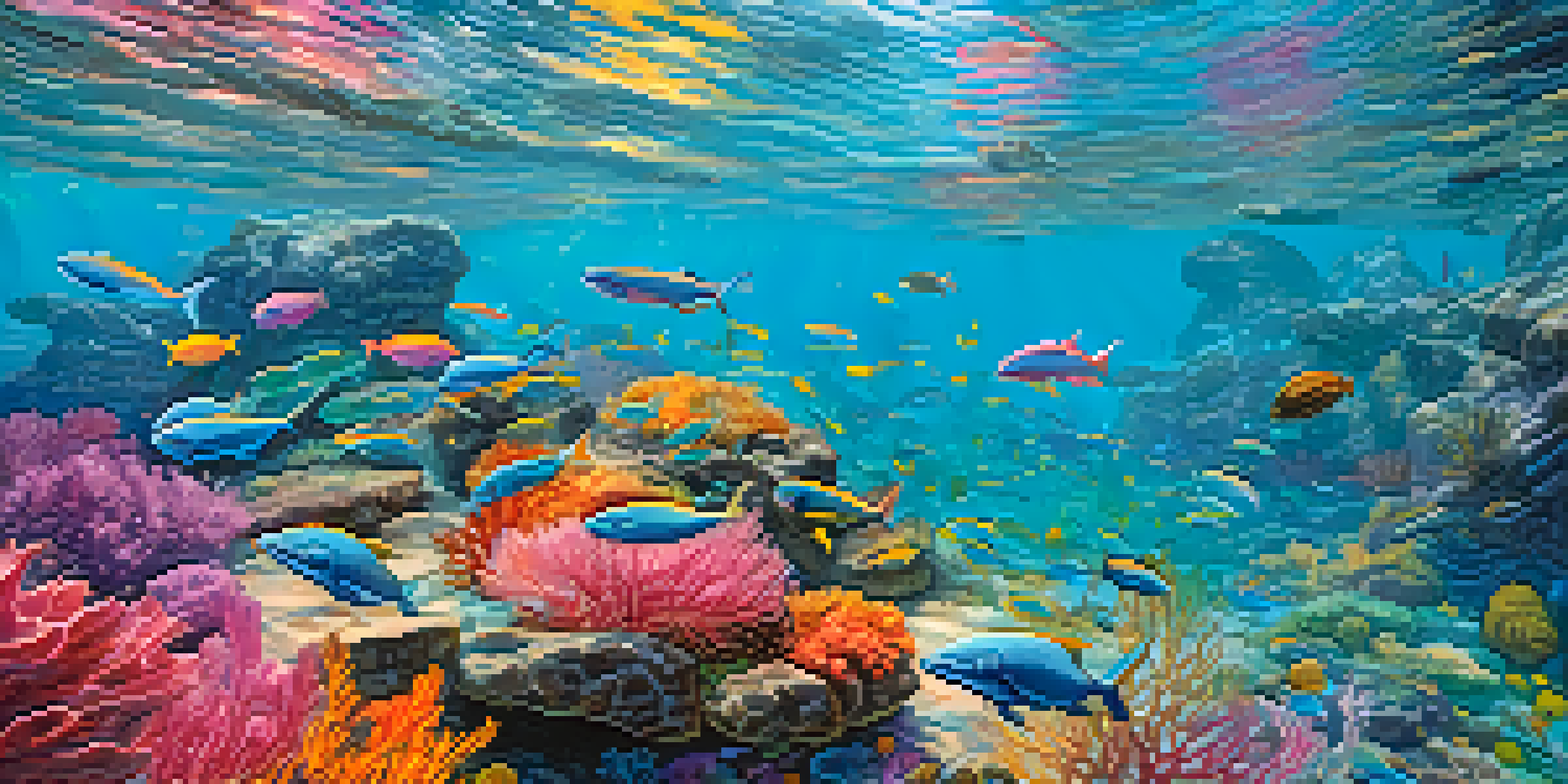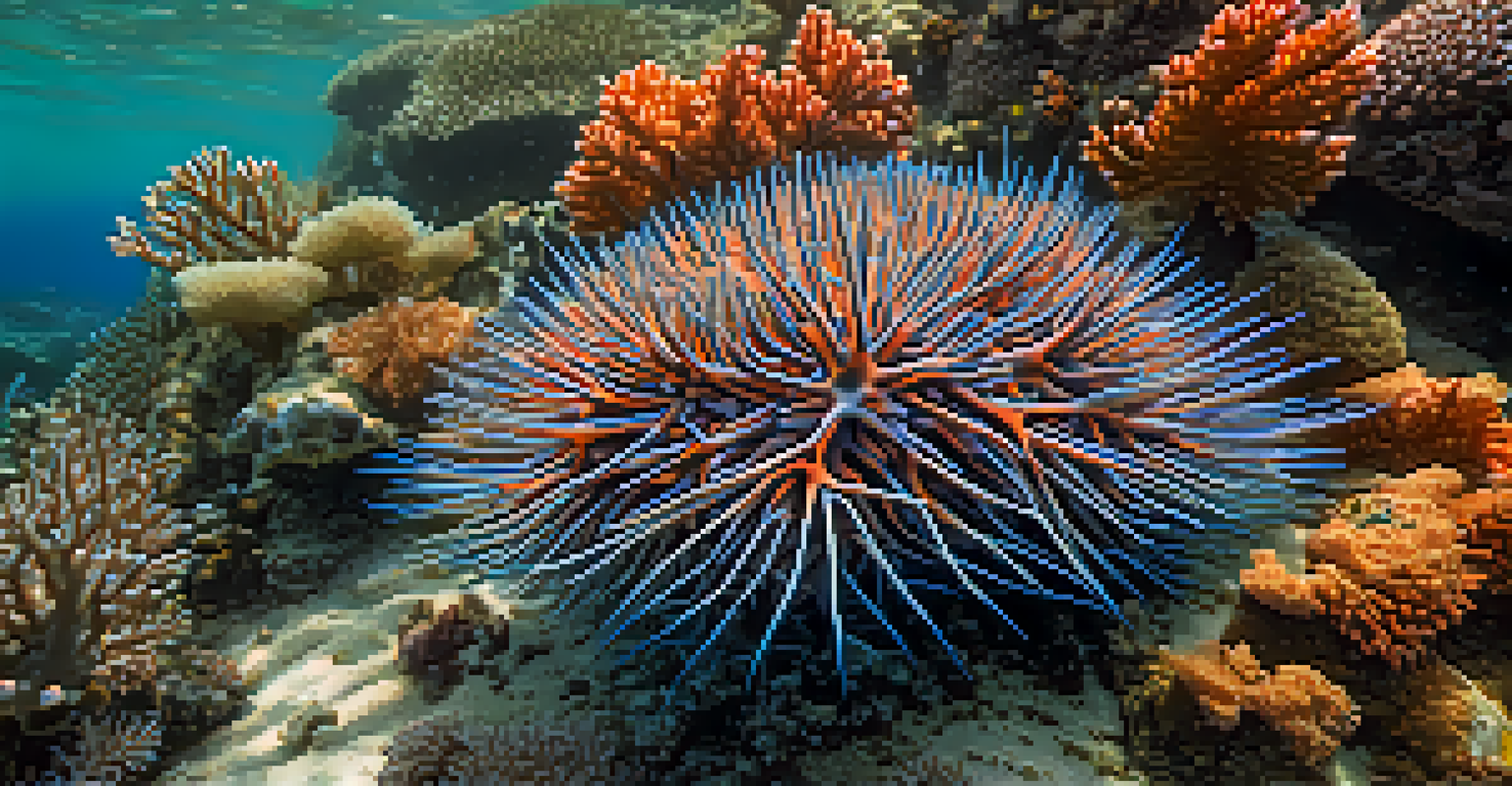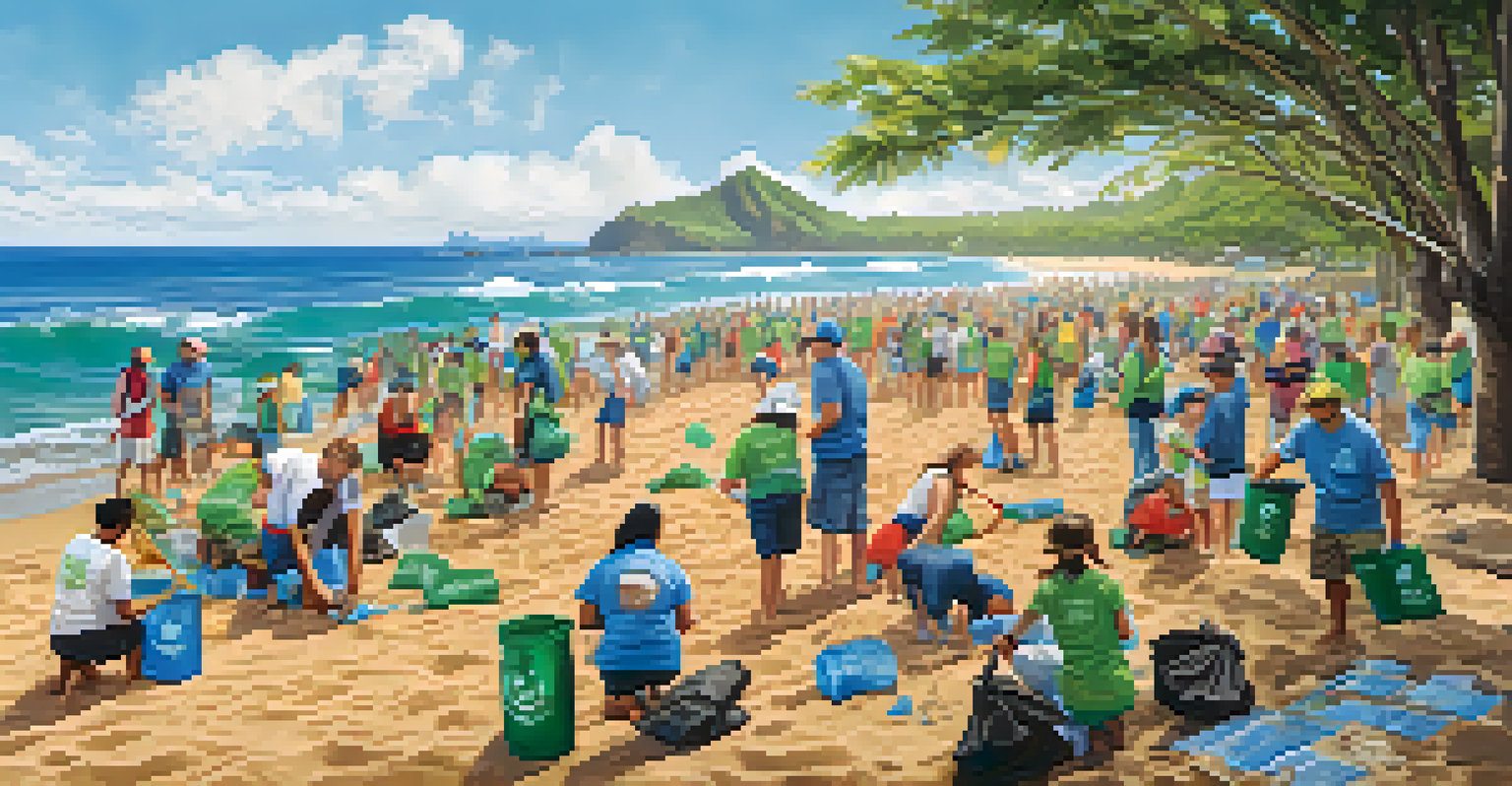Invasive Species and Their Impact on Honolulu's Marine Ecosystem

Understanding Invasive Species in Marine Environments
Invasive species are non-native organisms that can disrupt local ecosystems. When introduced to a new habitat, they often outcompete native species for resources, leading to significant ecological changes. In Honolulu, the unique marine environment is particularly vulnerable to these disturbances.
Invasive species are like uninvited guests that disrupt the harmony of a well-ordered home.
These species can be plants, animals, or even microorganisms, and their impacts can be profound. For example, when a new predator is introduced, it may decimate native fish populations that have no natural defenses against it. Recognizing the threat of invasive species is the first step toward protecting Honolulu's delicate marine ecosystem.
Moreover, invasive species can alter the physical environment itself, changing habitats and food webs. This domino effect can lead to a decline in biodiversity, impacting not just marine life but also the local economy, which relies on healthy fisheries and tourism.
The Marine Ecosystem of Honolulu: A Unique Biodiversity
Honolulu's marine ecosystem is one of the most diverse in the world, home to a variety of fish, coral, and other organisms. This rich biodiversity is crucial for maintaining the health of the ocean and supporting local livelihoods. Unfortunately, this vibrant ecosystem is increasingly threatened by invasive species.

The waters surrounding Honolulu are not just beautiful; they are a life source for many species, including the beloved Hawaiian monk seal and various types of coral. Each species plays a role in the ecosystem, contributing to its overall balance. Invasive species can upset this balance, leading to unforeseen consequences.
Invasive Species Disrupt Ecosystems
Invasive species threaten the delicate balance of Honolulu's marine ecosystems by outcompeting native species for resources.
For instance, the introduction of species like the crown-of-thorns starfish has led to coral degradation, which in turn affects the entire food web. It's vital to understand how each organism interacts within this ecosystem to appreciate the potential impact of invasive species.
Common Invasive Species Affecting Honolulu's Waters
Several invasive species have made their way to Honolulu's waters, each presenting its unique set of challenges. One notable example is the lionfish, a predatory fish with venomous spines that has started to populate Hawaiian reefs. This fish poses a threat to native fish species, which are unaccustomed to such predators.
We won't have a society if we destroy the environment.
Another invasive species is the algae known as Caulerpa, which can overgrow and smother coral reefs, preventing them from receiving sunlight. This not only harms the corals but also disrupts the entire marine ecosystem that relies on them. Understanding these species helps in devising strategies for management and control.
Additionally, the introduction of species like the green sea turtle can lead to competition with native turtles for food and habitat. Identifying and monitoring these invasive species is crucial for the preservation of Honolulu's marine biodiversity.
How Invasive Species Affect Coral Reefs in Honolulu
Coral reefs are often considered the 'rainforests of the sea' due to their rich biodiversity, but they are under siege from invasive species. Many non-native species can outcompete corals for space and resources, leading to coral bleaching and decline. This is particularly alarming for reefs around Honolulu, which are vital to marine life and tourism.
For example, the crown-of-thorns starfish, as mentioned earlier, feeds on coral polyps, leading to significant reef degradation. When coral reefs suffer, the entire ecosystem suffers, as many fish and marine organisms depend on these structures for shelter and breeding.
Economic Risks from Biodiversity Loss
The decline of native species due to invasive organisms can significantly impact the fishing and tourism industries in Honolulu.
Moreover, the loss of coral reefs affects local communities that depend on fishing and tourism. Protecting these reefs from invasive species is essential not just for ecological balance but also for the economic health of the region.
The Economic Impact of Invasive Species on Local Communities
Invasive species don't just threaten biodiversity; they also pose a significant economic risk to local communities in Honolulu. The fishing industry, which is vital for many families, can be severely impacted by the decline in native fish populations due to competition from invasive species. This can lead to reduced catches and, ultimately, financial losses.
Tourism, another cornerstone of Honolulu's economy, can also suffer. Visitors come to enjoy the pristine beaches and vibrant marine life, but if invasive species degrade these natural attractions, it could deter tourists. Maintaining healthy ecosystems is essential for sustaining both industries.
Furthermore, management efforts to combat invasive species require funding and resources, which can strain local governments. Investing in education and awareness programs about the impact of invasive species can help mitigate these economic challenges.
Efforts to Manage Invasive Species in Honolulu
To combat the threat of invasive species, various organizations and agencies are working together in Honolulu. Initiatives include monitoring invasive species populations, conducting research, and implementing control measures. Public awareness campaigns are also crucial, as they educate residents and tourists about the importance of protecting native ecosystems.
For instance, community clean-up events are organized to remove invasive plants and debris from beaches and coastal areas. These grassroots efforts not only help the environment but also foster a sense of community and stewardship among residents.
Community Action is Vital
Individual efforts, such as cleaning recreational gear and supporting local conservation initiatives, are crucial for protecting Honolulu's marine biodiversity.
Additionally, researchers are exploring biological control methods, which involve using natural predators to keep invasive species in check. These combined efforts are essential for preserving the unique marine ecosystem of Honolulu for future generations.
The Role of Individuals in Protecting Marine Ecosystems
Each of us has a role to play in protecting Honolulu's marine ecosystems from invasive species. Simple actions, like cleaning your boat and gear before moving between water bodies, can help prevent the spread of invasive organisms. Awareness is key; understanding which species are invasive can guide you in making informed choices.
Moreover, supporting local conservation efforts by volunteering or donating can make a significant difference. Engaging in community initiatives not only helps the environment but also strengthens community ties and fosters a collective sense of responsibility.

Finally, sharing information about the impacts of invasive species with friends and family can amplify awareness. Together, we can create a ripple effect that encourages more people to take action in preserving the beauty and biodiversity of Honolulu's marine ecosystems.